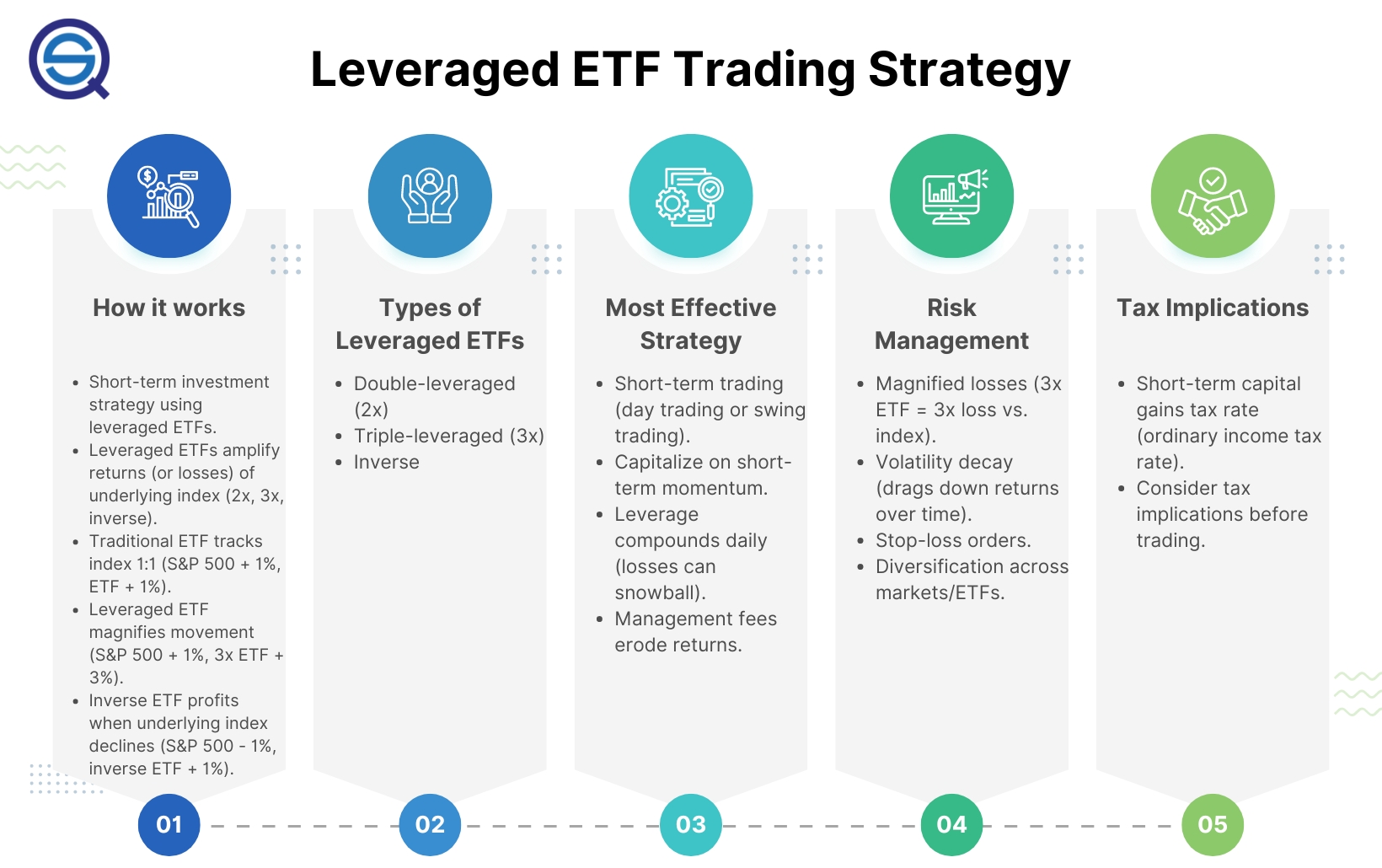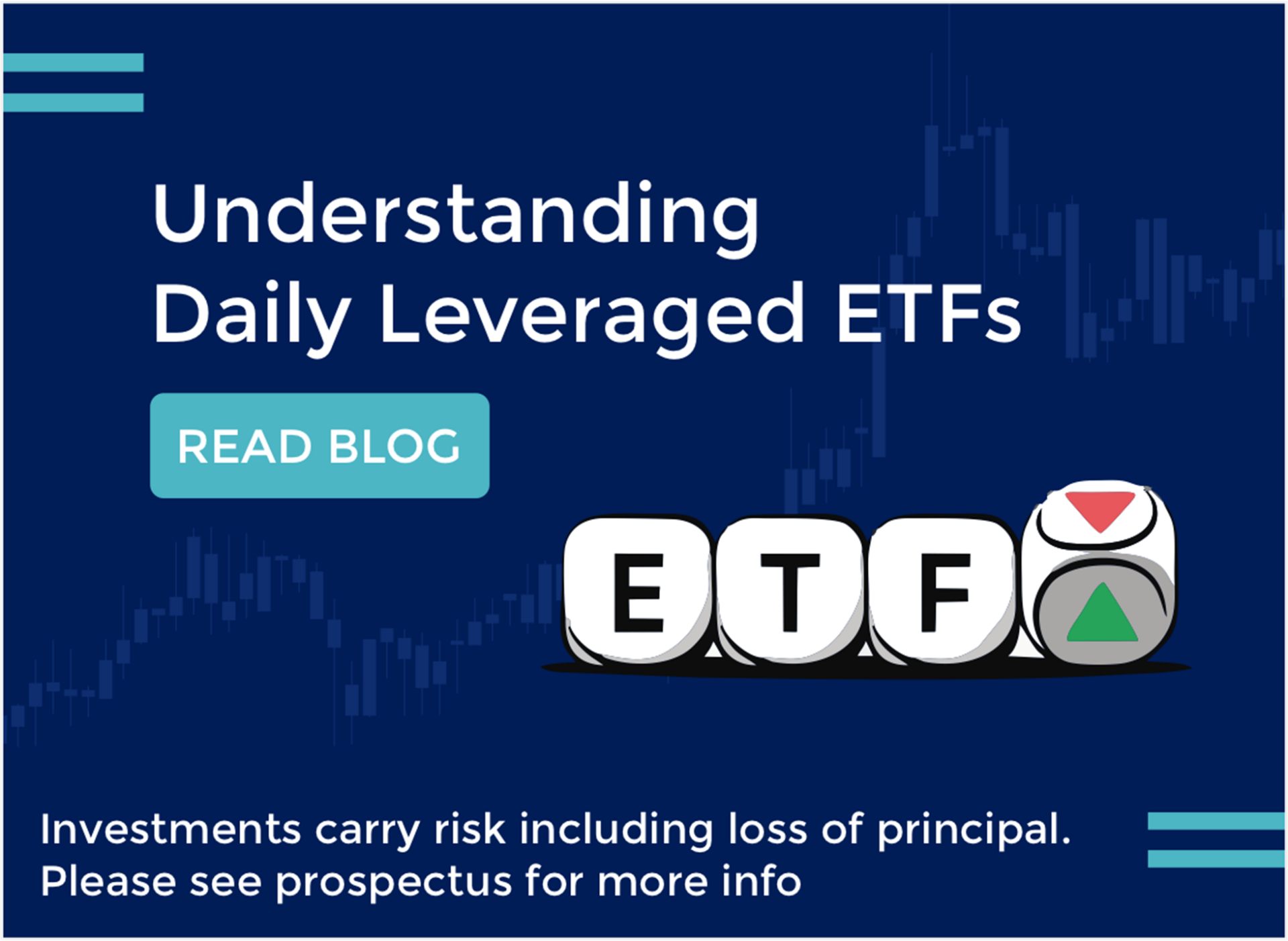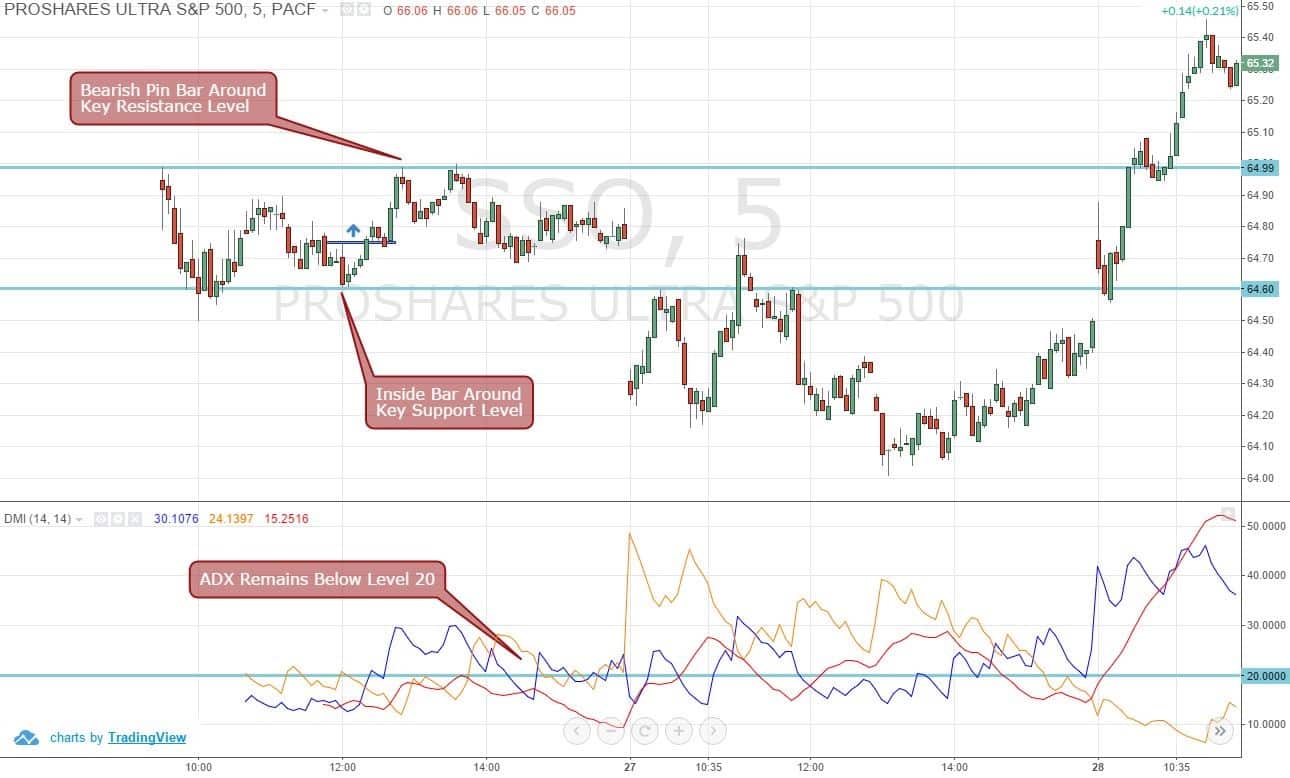Did you know that some leveraged ETFs can move like a caffeinated squirrel on a sugar high? In the fast-paced world of day trading, understanding leveraged ETFs is crucial for maximizing potential gains and managing risks effectively. This article dives into the essentials of leveraged ETFs, their unique dynamics compared to traditional ETFs, and highlights the best options available in 2023. We discuss strategies for selecting the right ETF, the importance of market conditions, and how to analyze these financial instruments for trading opportunities. Additionally, we cover risk management, tax implications, and common pitfalls to avoid. Whether you're a seasoned trader or just starting, DayTradingBusiness equips you with the knowledge to navigate the exciting landscape of leveraged ETFs.
What are leveraged ETFs and how do they work for day trading?
Leveraged ETFs are exchange-traded funds that use financial derivatives and debt to amplify the returns of an underlying index. For day trading, they aim to provide multiples of the daily performance of the index they track, such as 2x or 3x.
Traders use leveraged ETFs to capitalize on short-term market movements, seeking quick profits. However, they come with higher risk due to volatility and potential for amplified losses.
Top leveraged ETFs for day trading include:
1. SPXL – Targets 3x the daily performance of the S&P 500.
2. TQQQ – Aims for 3x the daily performance of the NASDAQ-100.
3. UDOW – Seeks to deliver 3x the daily performance of the Dow Jones Industrial Average.
4. SQQQ – Provides -3x the daily performance of the NASDAQ-100, useful for bearish strategies.
Day traders often use these ETFs for their liquidity and potential for significant returns within a single trading session.
Which leveraged ETFs are best for day trading in 2023?
The best leveraged ETFs for day trading in 2023 include:
1. SPXL – ProShares Ultra S&P 500: Offers 3x exposure to the S&P 500, ideal for bullish market moves.
2. TQQQ – ProShares UltraPro QQQ: Provides 3x exposure to the Nasdaq-100, great for tech-focused trades.
3. UWT – VelocityShares 3x Long Crude Oil ETN: Targets crude oil prices, suitable for energy sector trading.
4. FAS – Direxion Daily Financial Bull 3X Shares: Focuses on financial stocks, beneficial in a rising market.
5. LABU – Direxion Daily S&P Biotech Bull 3X Shares: Captures biotech sector volatility, perfect for high-risk trades.
These ETFs are favored for their liquidity and volatility, making them ideal for day trading strategies.
How do I choose the right leveraged ETF for my trading strategy?
To choose the right leveraged ETF for day trading, consider these key factors:
1. Liquidity: Look for ETFs with high trading volume to ensure you can enter and exit positions easily.
2. Expense Ratios: Select ETFs with lower expense ratios to minimize costs, as higher fees can eat into your profits.
3. Underlying Index: Choose an ETF that tracks an index relevant to your trading strategy, whether it's focused on specific sectors, commodities, or broad markets.
4. Volatility: Assess the ETF's historical volatility; higher volatility can offer greater profit potential but also increased risk.
5. Performance History: Review past performance, especially during market conditions similar to those you expect to trade in.
6. Tracking Error: Look for ETFs with a low tracking error to ensure they closely follow their benchmark index.
7. Leverage Factor: Decide on the level of leverage (2x, 3x) that aligns with your risk appetite and trading goals.
8. Market Conditions: Be mindful of current market trends and economic indicators that could impact the ETF's performance.
By evaluating these factors, you can select a leveraged ETF that fits your day trading strategy effectively.
What risks should I consider when day trading leveraged ETFs?
When day trading leveraged ETFs, consider these risks:
1. Volatility: Leveraged ETFs magnify market movements, leading to greater price swings and potential losses.
2. Decay: Daily rebalancing can result in performance decay over time, especially in volatile markets, leading to underperformance.
3. Liquidity: Some leveraged ETFs may have low trading volumes, increasing the risk of slippage and difficulty in executing trades.
4. Margin Calls: Using leverage amplifies both gains and losses, which can lead to margin calls if your account balance falls below the required level.
5. Market Timing: Successful day trading relies heavily on precise market timing, which can be challenging and increases the risk of losses.
Understand these risks to navigate leveraged ETFs effectively.
How do leveraged ETFs differ from traditional ETFs for day trading?
Leveraged ETFs amplify returns using financial derivatives, typically seeking to deliver 2x or 3x the daily performance of their underlying index. Traditional ETFs aim to match the index's performance without leverage. For day trading, leveraged ETFs can offer higher potential gains but also come with increased risk and volatility, making them more suitable for experienced traders looking for short-term opportunities. Some top leveraged ETFs for day trading include ProShares UltraPro QQQ (TQQQ), which targets the Nasdaq-100, and Direxion Daily S&P 500 Bull 3X Shares (SPXL), which focuses on the S&P 500.
What are the top-performing leveraged ETFs this month?

This month, some of the top-performing leveraged ETFs for day trading include TQQQ (ProShares UltraPro QQQ), SPXL (Direxion Daily S&P 500 Bull 3X Shares), and UPRO (ProShares UltraPro S&P 500). These ETFs have shown strong gains due to market volatility and bullish trends. Always check current performance data and market news for the latest updates.
How can I analyze leveraged ETFs for day trading opportunities?
To analyze leveraged ETFs for day trading opportunities, follow these steps:
1. Identify Volatility: Look for leveraged ETFs that track high-volatility sectors, like technology or energy. Higher volatility often leads to better day trading opportunities.
2. Check Volume: Focus on ETFs with high trading volume. This ensures liquidity, making it easier to enter and exit positions quickly.
3. Monitor Technical Indicators: Use indicators like moving averages, RSI, and MACD to identify entry and exit points. Look for patterns suggesting momentum.
4. News and Events: Stay updated on news affecting the underlying assets. Earnings reports, economic data, and geopolitical events can drive price movements.
5. Set Risk Parameters: Define your risk tolerance and set stop-loss orders to protect against significant losses. Leveraged ETFs can amplify losses as well as gains.
6. Use Charting Tools: Utilize charting software to visualize price trends and patterns. This helps in making informed decisions based on historical data.
7. Backtest Strategies: Before trading, backtest your strategies on historical data to gauge their effectiveness.
Popular leveraged ETFs for day trading include TQQQ (ProShares UltraPro QQQ) and UPRO (ProShares UltraPro S&P 500).
What is the best time of day to trade leveraged ETFs?
The best time of day to trade leveraged ETFs is during market opening hours, specifically the first hour after the market opens (9:30 AM to 10:30 AM EST) and the last hour before the market closes (3 PM to 4 PM EST). These periods typically have higher volatility and volume, which can lead to more profitable trading opportunities for day trading leveraged ETFs. Focus on trading during these times to capitalize on price movements.
How do market conditions affect leveraged ETF performance?

Market conditions significantly impact leveraged ETF performance. In a bullish market, leveraged ETFs can amplify gains due to their structure, often providing returns of 2x or 3x the daily movement of the underlying index. Conversely, in a bearish market, losses can be magnified, leading to substantial declines. High volatility can also erode returns over time due to daily rebalancing, making it crucial for day traders to monitor market trends and sentiment closely. For day trading, choosing top leveraged ETFs like TQQQ or SPXL can capitalize on these market conditions effectively, but understanding the risks is essential.
What are the benefits of using leveraged ETFs for short-term trading?
Leveraged ETFs amplify returns, allowing traders to achieve higher gains on short-term price movements. They provide liquidity and are designed for daily trading, making them ideal for day trading strategies. These ETFs can deliver significant returns in a brief period, capitalizing on market volatility. They also allow traders to gain exposure to various sectors without needing to buy individual stocks. However, they carry higher risk and potential for greater losses, so understanding market trends and timing is crucial.
How can I effectively manage risk when trading leveraged ETFs?
To effectively manage risk when trading leveraged ETFs, follow these strategies:
1. Set Stop-Loss Orders: Establish clear stop-loss levels to limit potential losses.
2. Use Position Sizing: Only allocate a small percentage of your capital to each trade to minimize risk exposure.
3. Monitor Volatility: Keep an eye on market volatility; leveraged ETFs can amplify both gains and losses.
4. Diversify Your Portfolio: Avoid concentrating investments in a single leveraged ETF; spread risk across different sectors.
5. Stay Informed: Follow market news and trends that affect the underlying assets of your leveraged ETFs.
6. Limit Leverage: Use lower leverage ratios if you're uncertain about market direction.
7. Regularly Review Trades: Analyze past trades to learn from successes and mistakes.
By employing these strategies, you can better navigate the risks associated with leveraged ETFs in day trading.
What are the tax implications of day trading leveraged ETFs?
Day trading leveraged ETFs can lead to significant tax implications. Short-term capital gains apply to profits from trades held for less than a year, which are taxed at your ordinary income tax rate. If you incur losses, they can offset gains, but the IRS has specific rules on wash sales that you should consider. Additionally, if you frequently trade, you may be classified as a trader by the IRS, which can affect how you report your income and expenses. Always consult a tax professional to understand your specific situation.
Learn about Tax Implications of Forex Day Trading
How do I set up a trading plan for leveraged ETFs?

To set up a trading plan for leveraged ETFs, follow these steps:
1. Define Your Goals: Determine your profit targets and risk tolerance. Decide if you're day trading or holding for a longer period.
2. Choose Top Leveraged ETFs: Research and select leveraged ETFs like TQQQ, SPXL, or UPRO, known for high volatility and potential gains.
3. Analyze Market Conditions: Use technical analysis to identify trends, support, and resistance levels. Check market news that may impact your chosen ETFs.
4. Set Entry and Exit Points: Clearly define where you'll enter trades and when to exit, both for taking profits and cutting losses.
5. Risk Management: Decide on the percentage of your portfolio to risk per trade and set stop-loss orders to protect your capital.
6. Monitor and Adjust: Regularly review your trades and the performance of your leveraged ETFs. Be ready to adjust your plan based on market changes.
7. Stay Disciplined: Stick to your plan. Avoid emotional trading and maintain consistency in your strategy.
This structured approach will help you navigate trading leveraged ETFs effectively.
What tools and resources can help me trade leveraged ETFs effectively?
To trade leveraged ETFs effectively, use these tools:
1. Brokerage Platforms: Choose a reliable brokerage with low commissions and robust trading tools, like TD Ameritrade or Interactive Brokers.
2. Charting Software: Utilize tools like TradingView or ThinkorSwim for real-time charts and technical analysis.
3. Market News Sources: Stay updated with financial news from Bloomberg or CNBC to understand market movements.
4. Stock Screeners: Use screeners like Finviz or Yahoo Finance to identify top leveraged ETFs based on performance metrics.
5. Risk Management Tools: Implement stop-loss orders and position sizing calculators to protect your capital.
6. Educational Resources: Read guides or take courses on platforms like Investopedia or Coursera to deepen your trading knowledge.
These resources will enhance your ability to trade leveraged ETFs effectively.
How can I stay informed about news affecting leveraged ETFs?
To stay informed about news affecting leveraged ETFs, follow these steps:
1. Financial News Websites: Regularly visit sites like Bloomberg, CNBC, and MarketWatch for updates.
2. Social Media: Follow relevant accounts on Twitter and LinkedIn for real-time news and insights.
3. News Alerts: Set up Google Alerts with keywords like "leveraged ETFs" and "day trading" to get instant updates.
4. Forums and Communities: Join online forums like Reddit (r/investing) or specialized trading communities for discussions and tips.
5. Brokerage Resources: Use your brokerage’s research tools and newsletters for updates on leveraged ETFs.
6. Podcasts and Webinars: Listen to finance podcasts and attend webinars focused on trading strategies and market news.
These methods will help you stay updated on changes and trends impacting leveraged ETFs for day trading.
What Are the Best Leveraged ETFs for Day Trading?
The top leveraged ETFs for day trading include:
1. **ProShares UltraPro QQQ (TQQQ)** – Targets the Nasdaq-100 with 3x leverage.
2. **Direxion Daily S&P 500 Bull 3X Shares (SPXL)** – Aims for 3x the daily performance of the S&P 500.
3. **ProShares Ultra Russell2000 (UWM)** – Offers 2x leverage on the Russell 2000 index.
4. **Direxion Daily Gold Miners Bull 2X Shares (NUGT)** – Provides 2x exposure to gold mining companies.
5. **ProShares UltraShort QQQ (QID)** – Aims for -2x the daily performance of the Nasdaq-100.
These ETFs are popular for their high volatility and potential for quick gains in day trading scenarios.
Learn more about: What Are the Best ETFs for Day Trading?
Learn about What Are the Best ETFs for Day Trading?
What common mistakes should I avoid when day trading leveraged ETFs?
Avoid these common mistakes when day trading leveraged ETFs:
1. Ignoring Volatility: Leveraged ETFs amplify market movements. Failing to account for this can lead to significant losses.
2. Overtrading: Frequent buying and selling can rack up fees and increase risk. Stick to a clear strategy.
3. Neglecting Research: Don’t trade without understanding the underlying asset and market trends. Knowledge is crucial.
4. Lack of Stop Losses: Always set stop-loss orders to limit potential losses and protect your capital.
5. Holding Overnight: Avoid holding leveraged ETFs overnight due to the risk of substantial price swings and compounding effects.
6. Emotional Trading: Stay disciplined. Emotional decisions often lead to poor outcomes.
7. Ignoring Expense Ratios: High fees can erode your profits. Check the expense ratios before trading.
8. Misunderstanding Decay: Be aware that leveraged ETFs can suffer from decay in volatile markets, affecting long-term returns.
9. Assuming Correlation: Don’t assume leveraged ETFs will move in perfect correlation with their underlying indices.
By avoiding these mistakes, you can improve your day trading strategy with leveraged ETFs.
Learn about Common Mistakes in Day Trading Scalping and How to Avoid Them
Conclusion about Top Leveraged ETFs for Day Trading
In conclusion, leveraging ETFs can provide significant opportunities for day traders seeking to maximize their returns, but they come with inherent risks that must be managed carefully. By understanding the unique characteristics of these financial instruments, analyzing market conditions, and employing a solid trading strategy, traders can enhance their chances of success. Stay informed and utilize the tools available through DayTradingBusiness to navigate the complexities of leveraged ETFs effectively, ensuring that you make informed decisions in your day trading endeavors.
Sources:
- Can Day Trading Really Be Profitable? by Carlo Zarattini, Andrew ...
- Can Day Trading Really Be Profitable?
- Are Concerns About Leveraged ETFs Overblown?
- Performance of Japanese leveraged ETFs - ScienceDirect
- Hedging demand and market intraday momentum - ScienceDirect
- Intraday Share Price Volatility and Leveraged ETF Rebalancing by ...